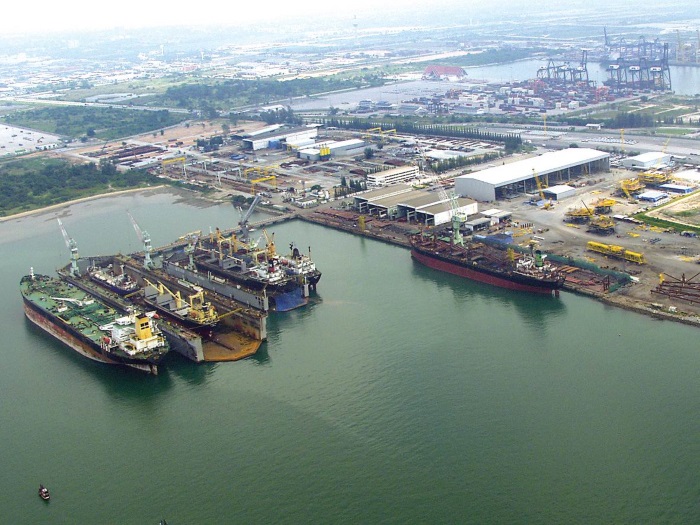Keppel Corporation is intensifying its efforts in the production and use of green hydrogen and ammonia as low-carbon energy sources through joining a consortium to develop a large-scale green hydrogen project in Australia and the signing of a Memorandum of Understanding (MOU) with Incitec Pivot Limited (IPL) on an industrial-scale green ammonia production facility in Australia.
Central Queensland hydrogen (CQ-H2) project consortium
As part of Keppel’s strategic plan to participate and capitalise on the projected growth of the hydrogen economy, especially in helping decarbonise hard-to-abate sectors, Keppel has signed an agreement today to join the Central Queensland hydrogen (CQ-H2) project consortium, which is developing a hydrogen production facility, among other related infrastructure. The CQ-H2 project aims to produce renewable hydrogen, scalable to up to around 2,500MW equivalent, and deliver via its different carriers to Japan and Singapore, as well as supplying large domestic customers in Central Queensland.
The CQ-H2 project is one of Australia’s largest green hydrogen projects and the consortium comprises Stanwell Corporation, Iwatani Corporation, Kansai Electric Power Company, Marubeni Corporation and Keppel. The consortium has initiated a Front End Engineering Design (FEED) study representing the largest investment in an Australian renewable hydrogen project of its kind to-date, with Final Investment Decision (FID) planned for late 2024 and commercial operations targeted to commence in 2028.
Keppel’s participation in the consortium provides the company with a competitive advantage of having access to a ready and reliable source of green hydrogen as feedstock for a green ammonia production facility which it plans to develop with IPL and other potential partners.
Mr Cameron Dick, Queensland’s Treasurer and Minister for Trade and Investment said, “Global demand for renewable hydrogen is accelerating to support energy transition and domestic energy security, Queensland Treasury has had a key role in facilitating and funding the Central Queensland hydrogen project. After a number of discussions with Keppel, we are delighted the company and Incitec Pivot have chosen Gladstone for their green ammonia production facility. This will open exciting and significant export possibilities, let alone regional jobs.”
Ms Cindy Lim, CEO of Keppel’s Infrastructure Division, said, “Through Keppel’s involvement in the CQ-H2 consortium, and our partnership with Incitec Pivot, we are redoubling our efforts in making green hydrogen and ammonia reliable and commercially viable energy sources. Keppel’s strong track record in developing and operating large-scale energy and environmental infrastructure combined with the expertise and experience of our esteemed partners will enable us to produce, store and transport green hydrogen and ammonia in a safe, scalable and cost competitive manner for end-users in Australia, Singapore and globally.
“There is increasing demand from governments and industries for carbon-free hydrogen, particularly for use in decarbonising hard-to-abate sectors such as steel, cement and ammonia production as well as heavy-duty transportation. Keppel is leveraging our domain knowledge and wide range of capabilities to develop integrated sustainable energy solutions across the value chain, in line with our Vision 2030.”
MOU on green ammonia facility
In addition, leveraging the accessibility of large-scale reliable green hydrogen supply from the CQ-H2 project, Keppel signed an MOU with IPL to explore the development of a green ammonia production facility in Queensland, Australia for both domestic and overseas consumption, including an end-to-end export supply chain to Singapore and Asia. IPL is a leading technology supplier to the resources and agricultural sectors, with world-scale fertiliser manufacturing assets capable of blue/green conversion of ammonia.
This MOU follows from an earlier feasibility study which Keppel, IPL and Temasek commenced in 2021[1] on producing green ammonia in Australia for export. Following the favourable findings of the studies, this MOU advances the next phase which involves the development of up to around 850,000 tonnes per annum of green ammonia production, as well as the related export facilities at Gladstone in Queensland, Australia.
The green ammonia would be supplied to Australian markets to support the decarbonisation of IPL’s domestic manufacturing assets, and also exported to Singapore to meet Keppel’s zero- or low-emissions power generation needs. Excess green ammonia would be marketed and sold to customers in Asia where demand for green energy resources is growing rapidly.
Ms Jeanne Johns, Managing Director & CEO of IPL, said, “IPL is pleased to be progressing this exciting opportunity with Keppel and the Queensland Government. Operating in a hard to abate sector requires us to be creative in addressing the challenges and opportunities of climate change. This innovative international partnership with Keppel is one of several decarbonisation projects we are progressing as part of our Ambition to be Net Zero by 2050.”
The parties will work closely with the Queensland Government on the essential infrastructure requirements as well as licences and approvals to facilitate the production and export of green ammonia. Gladstone, Queensland has been identified as one of seven clean hydrogen hubs across the country in Australia’s National Hydrogen Strategy. In October 2022, the governments of Australia and Singapore had also signed a Green Economy Agreement to advance trade and environmental sustainability, including collaborating on low emissions solutions and hydrogen for maritime use.
Keppel Corporation does not expect the abovementioned developments to have any material impact on its earnings per share and net tangible asset per share for the current financial year.
Source: Hellenic Shipping News






